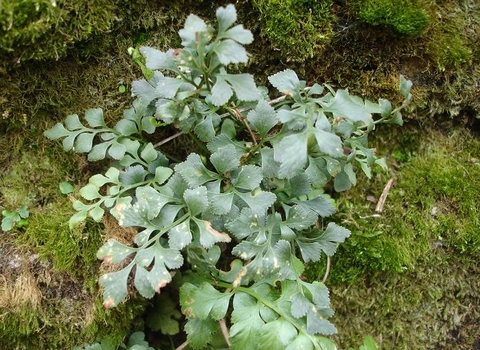
©Pillaretxebarria
Wall-rue
With club-shaped leaflets on its fronds, wall-rue is easy to spot as it grows out of crevices in walls. Plant it in your garden rockery to provide cover for insects.
Scientific name
Asplenium ruta-murariaWhen to see
January to DecemberSpecies information
Category
Statistics
Height: up to 20cmCommon.
About
Wall-rue is a small fern that can be found growing on limestone rocks and in crevices in old walls throughout town and country. It is often found close to other common species of rocks and walls, such as maidenhair spleenwort and hart's-tongue fern.Wall-rue, like other ferns, reproduce using spores, which ripen from June to October.
